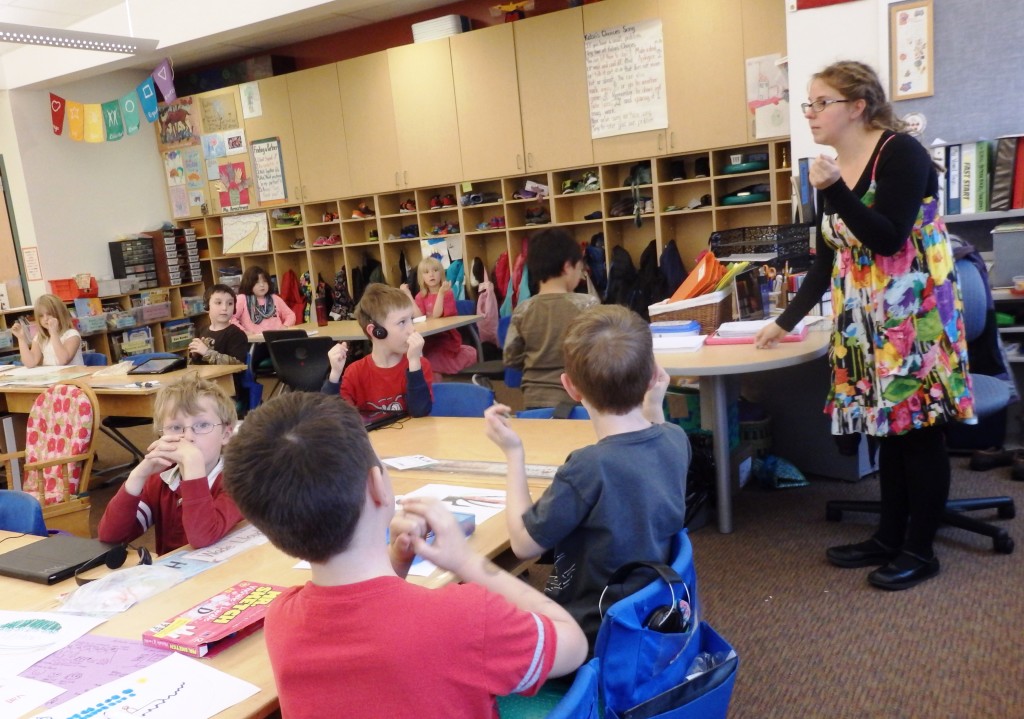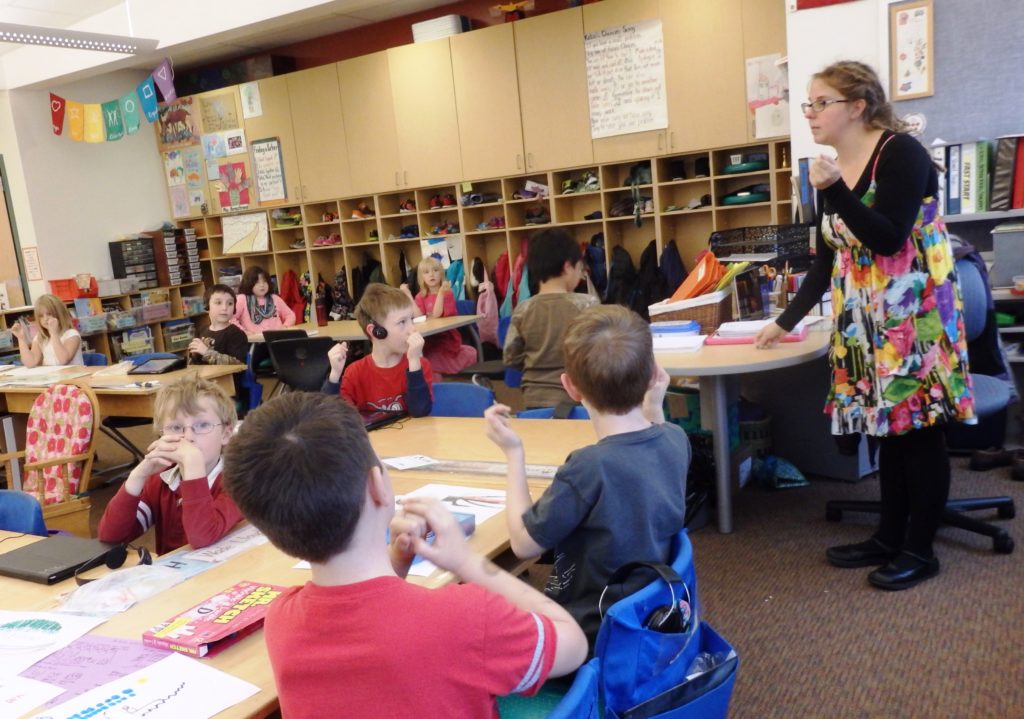
Teacher Sophia Armstrong in her combined K/1 class with 15 first graders and five Kindergarteners. (Emily Files)
An overflowing Kindergarten class prompted Haines School to move five Kindergarteners into the first grade classroom. That brings the Kindergarten classroom to 18 students and the combined K/1 to 20. Sophia Armstrong has been teaching the combined class for about two weeks now.
“When I say go, you’re going to start quietly cleaning up,” Armstrong told her class of 20 first graders and Kindergarteners on a recent Friday. The group just finished playtime and they were getting ready for music class.
Armstrong has taught elementary school for 10 years, in Haines for five. When she first saw that 23-student Kindergarten class this year, “I looked at that and I went, ‘this is impossible to teach and to do a good job,'” she says.
Armstrong looked at her classroom of 15 first graders, and had an idea. She talked to the Kindergarten teacher, Sue Ackerman, who is new to Haines School this year.
“I said do you think this could work?” Armstron said. “And Ms. Ackerman said ‘I think that I could figure that out.’ So I brought it up to administration and they said ‘yeah, we’ve got to do something, because it’s just too many kids.'”
The teachers and administrators observed and assessed which Kindergarteners seemed like they could do well in a classroom with older kids.
“You try to pick out kids who you think would benefit from seeing some harder material and also be able to emotionally sit next to older kids,” Armstrong said. “So we picked some kids who can hold their own next to first graders.”
They chose five Kindergarteners, got approval from their parents, and moved them into Armstrong’s classroom. She says those students aren’t first graders, now, they’re still Kindergarteners. She says they’re learning Kindergarten material, like their ABC’s, but at a faster pace.
“Like in Kindergarten they spend the year learning the alphabet, capital and lower case, but like they’re doing a letter a week,” she said. “And in first grade we’re learning a letter every other day, sometimes one a day. So we’ve learned half the alphabet whereas in Kindergarten they’ve learned six letters.”
Armstrong is already individualizing her teaching based on children’s abilities and pace. She says it’s been the same with the Kindergarteners. She just spends more time with them. After having them in her class for about two weeks, she’s seeing results.
“Every day I come over and help this one little boy and I can see it, he’s getting smarter every day,” Armstron said. “He’s still a little confused sometimes, but he’s looking around at his neighbors trying to figure out okay what are they doing, what should I be doing? And it really melts a teacher’s heart to see someone improving that much every single day.”
At a school board meeting earlier this month, a parent of one of the Kindergarteners that was moved said it’s been a positive experience for her child. But she did have questions about what happens in a few years. School administration says what will probably happen is once the students get to third or fourth grade, they’ll be moved back into their grade level’s classroom. At that older age, it’s alright to have 23 students in one class.
The parent at the meeting and some of the school board members wondered how that would feel to those five children who were with a higher grade for a few years.
Armstrong thinks they found the best solution they could to deal with the overcrowded Kindergarten classroom.
“We’ll fix it and we’ll cross that bridge when we need to, but for now there were just too many kids, it was a huge problem, and we just need to fix that problem now.”









